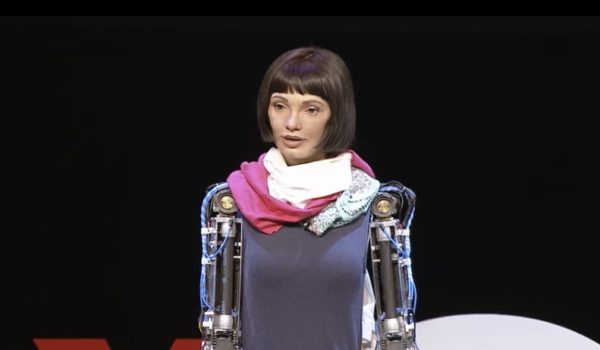
The world’s first robotic self-portraits, painted by an android called Ai-Da, have been unveiled at a new art exhibit in London, despite the “artist” not having a “self” to portray. The surprisingly accurate images question the role of artificial intelligence (AI) in human society and challenge the idea that art is exclusively a human trait, according to her creators.
Ai-Da is a life-size android artist powered by AI — computer algorithms that mimic the intelligence of humans — that can paint, sculpt, gesture, blink and talk. Ai-Da is designed to look and act like a human woman with a female voice. Her head and torso looks like a mannequin’s and she wears a variety of different dresses and wigs, although a pair of exposed mechanical arms do give her away as robotic. A team of programmers, roboticists, art experts and psychologists from the University of Oxford and the University of Leeds in England spent two years, from 2017 to 2019, developing the android, according to The Guardian. She is named after Ada Lovelace, the pioneering English mathematician who is considered one of the first computer programmers.
In the past, Ai-Da’s work consisted of abstract paintings based on complex mathematical models, and her first exhibition raised over $1 million in art sales, according to Artnet. She has even given her very own TEDx Talk. But now Ai-Da has created what are believed to be the first self-portraits made by a machine. Three of these robot selfies went on display at the Design Museum on May 18 in an exhibition titled “Ai-Da: Portrait of the Robot,” which is free to the public and will remain on display until Aug. 29.


